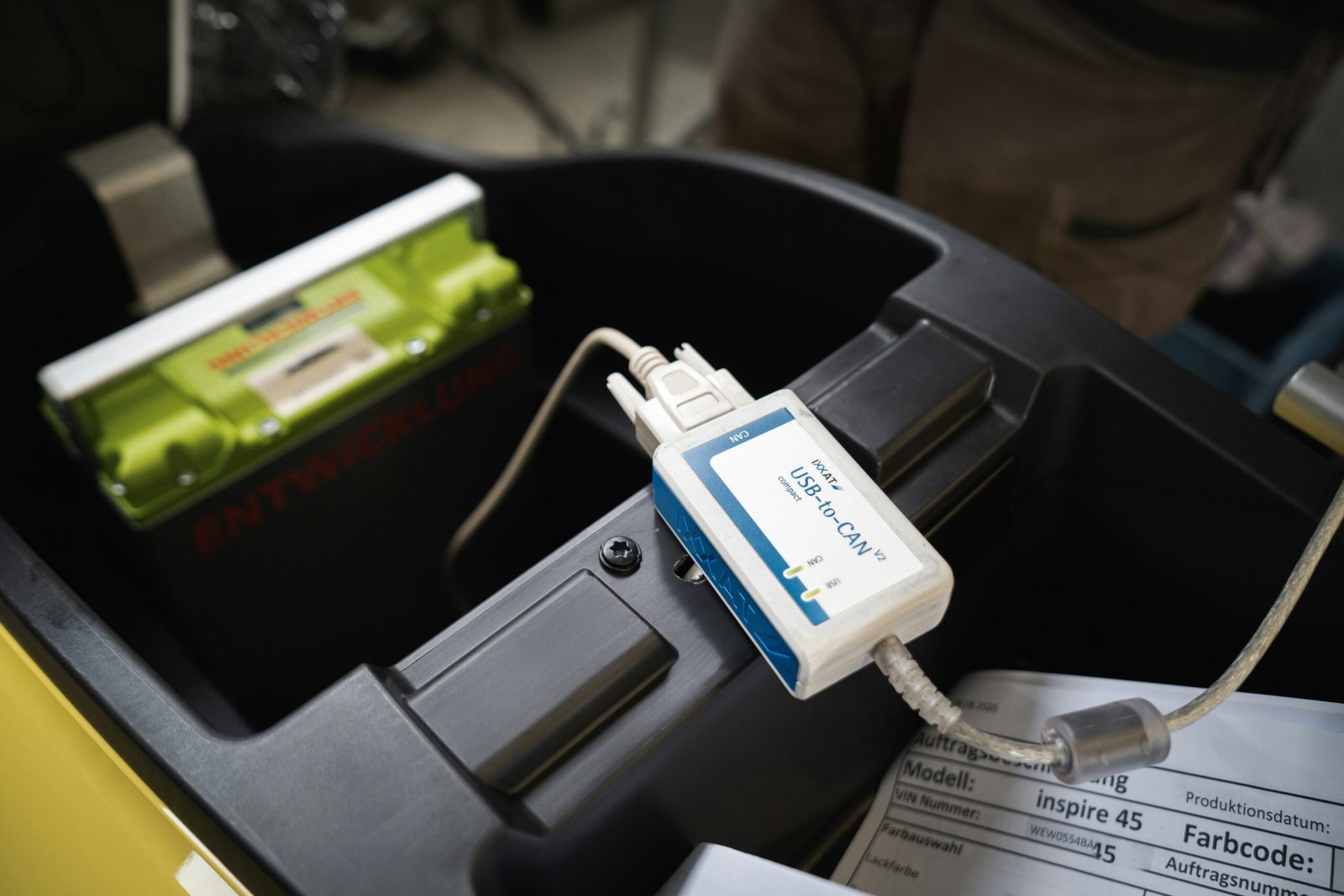Introduction to IP Addresses
IP addresses play a foundational role in the world of computer networking, serving as unique identifiers for devices connected to a network. They facilitate communication between devices across varied networks, allowing data to be routed accurately to its destination. An IP address is essential in identifying both the source and destination of data packets transmitted over the Internet or a local network.
There are two primary formats of IP addresses currently in use: IPv4 and IPv6. IPv4 addresses consist of four octets, represented by decimal numbers, each ranging from 0 to 255, and are separated by periods (for example, 192.168.1.1). This format can theoretically support over 4 billion unique addresses. However, with the exponential growth of devices connected to the Internet, IPv4 addresses are becoming increasingly scarce.
To address this limitation, IPv6 was introduced. This newer addressing format utilizes a 128-bit address space, allowing for an astronomical number of unique IP addresses—approximately 340 undecillion addresses. IPv6 is structured to overcome the limitations of IPv4, using hexadecimal representation and separating segments with colons (for example, 2001:0db8:85a3:0000:0000:8a2e:0370:7334). As the Internet continues to expand, the adoption of IPv6 is critical for ensuring connectivity and growth.
The significance of IP addressing extends beyond mere identification; it is crucial for routing network traffic. Routers utilize IP addresses to determine the best path for data packets, ensuring they efficiently navigate through different networks. Understanding IP addresses and their formats is crucial for anyone involved in network management or IT, as they provide the basic framework for digital communication and connectivity.
The Special Significance of 127.0.0.1
In the realm of computer networking, the IP address 127.0.0.1 holds a unique and critical position, commonly referred to as the loopback address. This address is specifically designed for a device to communicate with itself. It allows for an efficient means of testing network configurations and services without relying on external network resources. Through this internal communication pathway, network administrators can troubleshoot and verify the proper setup of network software, as well as diagnose potential issues while maintaining control over the environment.
The loopback address serves as an invaluable utility for developers and engineers, enabling them to test applications locally before deploying them in a wider setting. By utilizing 127.0.0.1, applications can simulate network interactions and ensure that they function correctly without the interference of an external network. Moreover, because the traffic directed to this loopback address never leaves the local machine, it eliminates concerns related to network congestion and external security threats during testing processes.
In practical terms, firing up a command line or terminal and typing commands such as ‘ping 127.0.0.1’ effectively demonstrates that the network stack is operational. This action not only verifies that the Transmission Control Protocol/Internet Protocol (TCP/IP) configuration is set up appropriately but also confirms the functioning of components like firewalls and network interfaces. Thus, 127.0.0.1 and its exceptional capacity to serve as a loopback address enables both novice and experienced users to investigate and refine their networking capabilities safely and conveniently.
Understanding the Loopback Address
The loopback address, commonly identified by the IP address 127.0.0.1, is an integral aspect of networking that plays a crucial role in the functionality of both local applications and system diagnostics. Essentially, it serves as a virtual network interface that facilitates communication within the host operating system, allowing for the seamless testing and troubleshooting of various network services. By utilizing the loopback address, developers can ensure that their applications interact correctly with network protocols without the need for an external network connection.
One of the primary scenarios in which the loopback address is employed is during the development and testing of network software. Developers often use the loopback interface to verify that their applications can send and receive data appropriately. For instance, a web developer may run a local server and access it via http://127.0.0.1 to confirm that the application responds correctly. This method not only reduces the overhead associated with testing on an external server but also speeds up the debugging process by enabling immediate feedback on functionality.
Additionally, the loopback address is pivotal in ensuring the operational integrity of system interfaces. Network administrators utilize tools that ping the loopback address to confirm that the network stack is functioning properly on a given machine. If the ping command returns a successful response, it indicates that the network layer is operational and capable of sending messages, thus assuring that the local system can initiate connections.
In conclusion, the loopback address is a significant tool in both development and maintenance of networked applications. Its utility extends across various domains, from application testing to network diagnostics, underscoring its importance in ensuring that the underlying networking components of a system are functioning as intended.
The Role of Loopback Address in Diagnostics
The loopback address, particularly 127.0.0.1, plays a crucial role in the diagnostic processes employed by developers and network administrators. By design, this address allows a machine to communicate with itself, thereby enabling the testing of network applications without the need for an external network connection. This feature is especially beneficial when it comes to troubleshooting network configuration issues, ensuring that the local software behaves as expected before it is deployed in a multi-machine environment.
When a network administrator identifies a problem, they often begin diagnostics at the loopback level. A common practice involves using command-line tools such as “ping” and “traceroute” directed at 127.0.0.1. When a successful ping response is received, it confirms that the TCP/IP stack is operational and that fundamental network services are functioning correctly. Additionally, this tested address also facilitates the examination of client-server interactions on the host machine. Software developers frequently use 127.0.0.1 to emulate server-client communication, allowing them to confirm the correct functionality of their applications without external dependencies.
Moreover, several diagnostic tools incorporate the loopback address to identify issues. For instance, utilities such as “netstat” can track the status of network connections while monitoring port activity on 127.0.0.1. Understanding local host services becomes simpler when developers can observe how their applications listen to and manage local connections. In this context, port 49342 can be referenced, which may be utilized by specific local services or applications during these tests. By engaging the loopback address, administrators and developers can ensure a thorough and controlled environment in which to troubleshoot and validate network applications, ultimately streamlining the development process and reducing deployment errors.
Introduction to Networking Ports
Networking ports, integral to the Internet Protocol (IP) suite, function as logical endpoints for communication within computer networks. While IP addresses identify devices on a network, ports specify particular services or applications on those devices that handle data traffic. This duality allows for efficient routing and management of connections in a complex web of network interactions.
Ports are classified into three primary categories: well-known ports, registered ports, and dynamic ports. Well-known ports, ranging from 0 to 1023, are reserved for specific protocols and services, such as Hypertext Transfer Protocol (HTTP) on port 80 and File Transfer Protocol (FTP) on port 21. These standard assignments ensure that networked devices can communicate seamlessly, as they all recognize these common port numbers for their designated services.
Registered ports, spanning from 1024 to 49151, are assigned by the Internet Assigned Numbers Authority (IANA) to user-defined applications. This allows developers to create applications that utilize predetermined ports, facilitating the availability and accessibility of services over the network. Unlike their well-known counterparts, registered ports can be used by various applications, but they still provide a structure for developers to follow.
Dynamic ports, which range from 49152 to 65535, are not assigned to specific services and can be utilized temporarily by applications as needed. These ports allow for short-lived connections and are typically used for client-side communication in a client-server architecture. When a client requests a connection to a server, it may use a dynamic port to establish that link while the server communicates through a designated port.
Understanding the function of networking ports is essential for troubleshooting connectivity issues, configuring firewalls, and optimizing network performance. The collaboration between IP addresses and ports is crucial for directing traffic effectively within both local and wide area networks.
Focus on Port 49342
Port 49342 is categorized as a dynamic or private port, which means it is often used by applications for temporary connections and is defined by the Internet Assigned Numbers Authority (IANA) as a port primarily intended for application use without being registered or standardized for specific purposes. Applications frequently utilize high-numbered ports such as 49342 for various purposes, especially in local networking scenarios.
One significant characteristic of applications utilizing this port is that they often employ it for peer-to-peer communications or dynamic service connections. For instance, software deployments, such as gaming applications or collaborative tools, may leverage port 49342 to establish connections between users in a simplified manner. This allows multiple users to communicate securely while minimizing conflicts with other established services that typically operate within the well-known ports range (1-1023).
Moreover, its selection as a high-numbered port can be attributed to its reduced likelihood of interference with commonly used services, enhancing the overall stability of the connections. Such attributes are particularly critical for local services, where smooth communication and data exchange foster optimal user experiences and application performance.
However, security implications should be considered when utilizing high-numbered ports like 49342. Due to their dynamic nature and frequent use in temporary sessions, these ports can become potential targets for unauthorized access or exploits. Consequently, administrators and users are encouraged to implement appropriate security measures such as firewall rules and intrusion detection systems to mitigate risks associated with these types of connections. Keeping software and services regularly updated will also help safeguard against vulnerabilities that could be exploited via commonly used ports, including 49342.
Interacting with Services on 127.0.0.1:49342
The IP address 127.0.0.1, commonly referred to as localhost or loopback address, is used to establish a network connection with the host machine itself. When combined with a specific port, such as 49342, it allows users to interact with services running locally. In practical applications, various command-line utilities and network monitoring tools can be employed to engage with these services effectively.
One of the simplest methods to check which services are active on a given port is using the netstat command. Executing the command netstat -an | find "49342" will display all connections and listening services on port 49342. The output provides insights into whether any applications are bound to this port and the state of those connections. It is a critical tool for network diagnostics.
Another useful utility is telnet, which allows users to connect to services on specified ports. To test the connectivity to a service running on 127.0.0.1:49342, you could use the command telnet 127.0.0.1 49342. This will either establish a connection if a service is listening on that port, or return an error if no such service is available. Telnet is particularly useful for troubleshooting as it provides a way to directly interact with network services.
For those seeking more advanced monitoring capabilities, tools like Wireshark can be employed. Wireshark captures and analyzes the packets sent over the network, allowing users to see the data exchanged with a service running on 127.0.0.1:49342 in real time. Such analysis can highlight performance bottlenecks, unauthorized access attempts, and other critical network behavior.
Utilizing these command-line tools and network monitoring utilities provides a comprehensive approach to managing and troubleshooting services on the localhost. By understanding how to interact with services at 127.0.0.1:49342, one can ensure that local applications function as intended and are secure from potential vulnerabilities.
Troubleshooting Techniques and Tools
Troubleshooting network issues related to local services, particularly concerning the IP address 127.0.0.1 and port 49342, requires a systematic approach and the use of appropriate tools. The first step in diagnosing connectivity problems often involves utilizing command-line tools that can yield valuable insights into network behavior. Among these, the ping command stands out as a foundational tool. By sending echo requests to 127.0.0.1, users can verify that the local machine’s network stack is operational. If the ping responses are successful, it indicates that the local services are functioning correctly at the basic level.
Another powerful command is tracert (or traceroute in Linux systems), which can help users detect the path data takes to reach the intended service. While 127.0.0.1 is a loopback address and doesn’t require a path in the traditional sense, understanding how local applications communicate with this address can shed light on potential issues. Additionally, using the netstat command provides a real-time view of network connections and listening ports, including 49342. This can help in identifying whether the specific port is actively being used by the expected application or if it is in a waiting state due to misconfiguration.
Moreover, network diagnostic tools such as Wireshark can offer deeper insights by capturing and analyzing packets transmitted over the network. This can be especially useful if there are connectivity problems with local services trying to interact with other services or applications. It is also advisable to check firewall settings, which can block connections on specific ports, as well as examining system logs for errors related to the application utilizing port 49342.
Employing these troubleshooting techniques and tools can streamline the process of diagnosing issues related to local services associated with the IP address 127.0.0.1 and help ensure smooth network operations.
Best Practices for Securing Local Services
Securing local services that run on specific IP addresses and ports, such as 127.0.0.1 for localhost and port 49342, is critical to maintaining the integrity of a network. While these services are designed to operate internally, they can still be vulnerable to various threats. Therefore, implementing best practices for securing these local services is essential. One fundamental step is to restrict access to local services by binding them explicitly to the loopback address of 127.0.0.1 rather than a public IP. This limits the accessibility of the service to only the local machine, significantly reducing the risk of external attacks.
Another important measure is to employ strong authentication mechanisms to ensure that only legitimate users can access the services. Utilizing secure passwords and possibly integrating multi-factor authentication can greatly enhance security. System administrators should periodically review and update credentials to prevent unauthorized access. Furthermore, regularly applying security patches and updates to the software running on local systems is vital. Vulnerabilities in service applications are commonly exploited, and timely updates can shield against potential exploits.
Monitoring network traffic is another integral part of service security. Implementing local firewalls and intrusion detection systems can help in identifying and mitigating suspicious activities. These tools can be configured to alert administrators of odd access patterns that may signify unauthorized attempts to reach local services. On top of this, maintaining an up-to-date inventory of applications and services running on local ports can help in tracking any changes that might compromise security.
Lastly, regular audits and assessments should be conducted to evaluate the security posture of local services. These assessments can identify vulnerabilities and provide insights into improving security measures. By following these best practices, users can significantly enhance the security of local services and protect critical system resources from unauthorized access.
Conclusion and Final Thoughts
Understanding IP address 127.0.0.1 and port 49342 is paramount for both novices and seasoned professionals in the field of computer networking. As the loopback address, 127.0.0.1 serves a crucial role in local network communication, allowing devices to communicate with themselves for various testing and configuration purposes. Port 49342, while specific to certain applications, illustrates the general concept of port usage in networking—enabling various services on a device to operate independently while utilizing the same IP address.
For beginners, the knowledge of 127.0.0.1 serves as a foundational element of networking concepts. It provides insight into how devices utilize IP addresses for communication, enhancing one’s understanding of the broader network architecture. Furthermore, grasping the function of different ports allows individuals to comprehend how services interact in a multi-functional environment. This knowledge can inspire further exploration into advanced networking topics, including security protocols, data transmission methods, and the intricacies of routing.
For experienced professionals, engaging with concepts related to 127.0.0.1 and its associated ports fosters an appreciation for the underlying mechanisms that facilitate seamless network communication. Recognizing the potential implications of misconfigured loopback addresses or improper port management could significantly affect the security and efficiency of network operations. Continuous education in this evolving field is vital, as updates in technology and methodologies frequently reshape networking practices.
Ultimately, the examination of IP address 127.0.0.1 and port 49342 serves not only as a technical learning opportunity but also as an invitation to delve deeper into the multifaceted world of networking. By fostering an environment of continual learning, both beginners and experienced individuals can keep pace with advancements in technology, ensuring they remain proficient in an increasingly interconnected world.
















